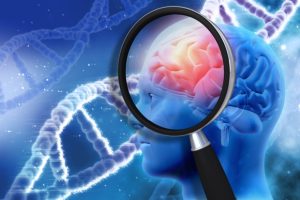 Early signs of Alzheimer’s disease have been found in the brain area associated with memory formation and information processing. The study confirmed that two molecules assumed to contribute to Alzheimer’s pathogenesis were present in the brain area involved in memory formation and information processing. Hopefully, these findings will inform the development of potential new treatment methods that can better target Alzheimer’s disease.
Early signs of Alzheimer’s disease have been found in the brain area associated with memory formation and information processing. The study confirmed that two molecules assumed to contribute to Alzheimer’s pathogenesis were present in the brain area involved in memory formation and information processing. Hopefully, these findings will inform the development of potential new treatment methods that can better target Alzheimer’s disease.
The researchers developed new approaches to study the two proteins associated with Alzheimer’s disease – tau and amyloid – assessing their role in the onset, progression, and symptom development of the disease.
Advertisement
Previous findings suggested that tau and amyloid first appear in separate areas of the brain, but the newer findings uncovered that both proteins are present in the same region of the brain at the early stages of Alzheimer’s disease.
Professor Bettina Platt explained, “In the field of Alzheimer’s and dementia research, there has been a long-running battle regarding the two main suspects that might cause brain cells to die – tau and amyloid. These two have never been brought together in human cases, and the relationship between them has not been clear. Our observations, therefore, consolidate conflicting evidence from other studies on the role of the proteins in the disease process and strongly support a notion of an early stage interaction between the two. It has long been assumed that Alzheimer’s-related changes within the brain occur long before symptoms are evident, but so far reliable methods to detect these were elusive. However, we have managed to modify experimental procedures in a way that we can now very sensitively determine when and where these proteins appear, and the big surprise was that they both appear together very early on, and in the same brain area. In doing so we have established a new benchmark for pathological investigations. Therefore, a long-standing puzzle in the field of dementia research has now been resolved to a large extent.”
Research lead Dr. David Koss added, “The entire research community is in agreement that it is a primary challenge to identify Alzheimer’s disease early – and our findings will go some way to help achieve this, though ultimately it will be up to the scientific community to further evaluate and build upon these results. These early-stage changes in the brains of people with Alzheimer’s disease highlight key biochemical processes that may not only enable improved diagnostic procedures but may also inform drug development programs.”
Related: 6 natural ways to prevent Alzheimer’s disease
Dr. Rosa Sancho, Head of Research at Alzheimer’s Research U.K., added, “This new study describes in detail the early appearance of both key hallmark Alzheimer’s proteins – tau and amyloid, previously thought to appear at different stages of Alzheimer’s disease. These proteins have long-puzzled scientists, as although we know that amyloid and tau make up the plaques and tangles found in the brains of people with Alzheimer’s, these build-ups don’t always correlate well with damage occurring to nerve cells.”
“This study shows that specific forms of tau and amyloid appear early in the disease process in the same brain region, before plaques and tangles are formed. Understanding which forms of tau and amyloid drive the early stages of Alzheimer’s will allow scientists to design drugs to target these specific forms and find new ways to accurately diagnose people,” Dr. Sancho concluded.
